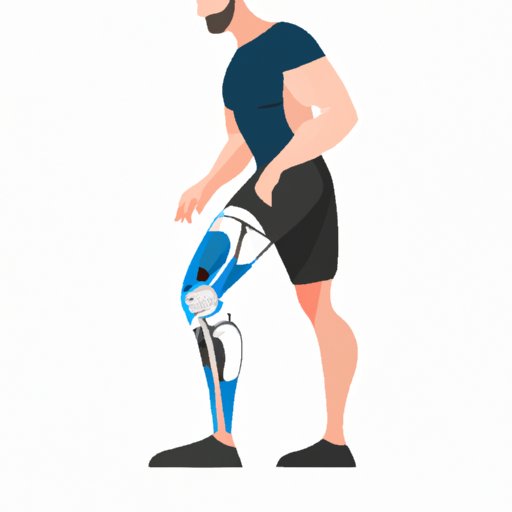
Introduction
If you’re an active individual, there’s a chance you’ve experienced a knee injury or heard of someone who has. Knee fractures, although not the most common injury, can happen to anyone and can have severe consequences if left untreated. This article provides an overview of everything you need to know about knee fractures, including how they happen, treatment options, and prevention strategies.
The Mechanics of a Broken Knee: How it Happens and How to Prevent It
A knee fracture occurs when there is a break in one of the bones that make up the knee joint. Common causes include trauma from a sports injury, a fall, or a car accident. However, some medical conditions, such as osteoporosis, can also lead to the weakened bones that make fractures more likely.
To prevent knee fractures, individuals should take measures to strengthen their muscles, maintain a healthy body weight, and wear appropriate protective gear during activities that involve the knees, like sports or biking. If individuals have a medical condition that weakens bones, they should consult with their healthcare provider to develop a prevention plan.
Everything You Need to Know About Breaking Your Knee and the Road to Recovery
The symptoms of a knee fracture can vary depending on the extent and location of the break, but some common signs include swelling, severe pain, and an inability to move the knee. To diagnose a fracture, a doctor will perform a physical exam and may also order x-rays or CT scans to identify the severity of the damage.
After a knee fracture, the recovery process can be lengthy and complex. Treatment will depend on the location of the fracture, as well as the individual’s overall health and medical history. Treatment options may include immobilization, physical therapy, or surgery in more severe cases.
From Fracture to Fixation: A Guide to Treating a Broken Knee
In severe cases, surgery may be necessary to repair a knee fracture. This type of operation may include internal fixation, where screws and metal plates are used to stabilize the knee, or total knee replacement, where the damaged knee joint is removed and replaced with an artificial one. Recovery from surgery for a knee fracture typically involves physical therapy and rehabilitation exercises to restore the knee to its full function.
Breaking the Stigma: Dispelling Common Myths About Knee Fractures
One common misconception is that people with knee fractures can be treated with just a simple cast. However, depending on the severity of a fracture, other medical interventions may be necessary to heal the fracture and prevent complications.
The Cost of a Broken Knee: Exploring the Physical, Emotional, and Financial Impacts
Knee fractures can be physically, emotionally, and financially costly. In addition to medical treatments and the impact on daily activities, many individuals may also require time off work or experience difficulty performing their typical job duties, leading to lost wages and financial hardship.
When a Broken Knee Isn’t Just a Broken Knee: Understanding Complications and Long-Term Effects
In some cases, complications may arise from a knee fracture. These can include infections, blood clots, and nerve damage. As a result, it’s important to monitor for any unusual symptoms after a fracture, such as fever, continued pain or swelling, or limited mobility.
Long-term effects can include an increased risk of developing arthritis or joint pain. Individuals should follow up with their healthcare provider after a knee fracture to ensure proper monitoring and ongoing care.
Preventing Knee Breakage in the First Place: Top Tips for Stronger, Healthier Knees
Maintaining strong and healthy knees is the best way to prevent a knee fracture. This can be achieved by following a healthy lifestyle, incorporating exercises that improve knee strength and flexibility, wearing appropriate footwear and protective gear, and managing any pre-existing medical conditions.
Conclusion
Knee fractures can happen to anyone; however, understanding the mechanics, prevention, treatment, and impacts of knee fractures can help individuals take ownership of their health and reduce the risk of injury. By following appropriate preventive measures, seeking medical care in a timely manner, and committing to an individualized recovery plan, individuals can regain strength and function, allowing them to return to their daily lives with confidence and comfort.




